St. John's Road
Hubert Lamy
En Remilly Saint-Aubin 1er Cru Chardonnay 2014
It has been a little while since we have had Olivier’s 2014. It’s our last bottle of three and the honey notes have definitely deepened.
The nose shows; sweet & sour lemons, green & golden apple, lime zest-candy, ripe pineapple, green melon, apricots, white peach, gentle, warm, white spice, beautiful chalkiness, caramel, vanillin, honey, candle wax notes, sea spray-fossils, understated limestone & volcanic minerals, fruit blossoms, yellow flowers/lilies, spring flowers, jasmine with mixed flower greens.
The body is full, thick & slightly waxy. Nice viscosity. sweet & sour lemons, green & golden apple, lime zest-candy, overripe pineapple, green melon, apricots, white peach, grapefruit w/ a touch of sugar, gentle, warm, white spice, beautiful, powdery, chalkiness, caramel, vanillin, honey, candle wax notes, light butter & cream quality, fresh herbaceousiness, sea spray-fossils, understated limestone & grainy, grey, volcanic minerals, light sulphur/flintiness, fruit blossoms, yellow flowers/lilies, spring flowers, jasmine with mixed flower greens. The acidity is round/phat...really well done. The nice finish glides gently with elegance, good balance, just hits the low end of rich & lush and depositing soft, powdery minerals as it long sets.
Photos of; Domaine Hubert Lamy, the road sign that lets you know your in St. Aubin, Winemaker-Olivier Lamy and their Domaine branding. — 6 years ago
Château Lafon-Rochet
Saint-Estèphe Cabernet Sauvignon Blend 2010
Still a baby. Tasted alongside the 2009 Rafanelli Cab and while both were killer, the Rafanelli seems to have the edge right now. This was still pretty wound up and seemed to have more to show down the road. Cassis, pencil shavings, earth. Tannic. Drink now with some patience or a decant. Will be best after 2025. — 6 years ago
Château Léoville-Las Cases
Grand Vin de Leoville du Marquis de las Cases Saint-Julien Red Bordeaux Blend 1982
Tasted blind. Red scarlet mixed in with dark tawny color. Bright fruit meets you from the start. This is still very young, chewy and has some strong tannins. This is evolving at a glacial place. Probably will be a wine for my kids to enjoy. 94 but will surely score higher down the road. — 7 years ago

Château Pipeau
St. Émilion Grand Cru Red Bordeaux Blend 2005
Behrens Family Winery
The Road Les Traveled III St. Helena Red Blend
NV wine from Behrens Family Winery. Love this producer for making some seriously deep and complex wines that have just about anything to complement anything! This wine is massive, and ready to go! Fruit forward but not a jam bomb. Nice chalky and still youthful and expressive blackberry fruit. This one shows complexity from the middle to the finish where a toasted oak and chocolate mocha note kind of kick in. Really good with dinner but huge with dessert. If this isn't my one and only Erna Schein left, it's close! Very nice wine!! — 8 years ago

Hilliard Bruce
Sky Pinot Noir 2015
Easily one of the better incarnations of this wine, the 2015 Sky is drinking really well. I think (but am not 100% certain) that by this vintage Greg Brewer had moved from Melville to John Hilliard’s operation just down the road on Route 246. Has many of the same characteristics you’d expect from a St Rita Hills pinot - beautiful bright strawberry-laced fruit, a bit of earth and spice, all wrapped together in a wine with a seamless mouthfeel. Very sad that life circumstances compelled John and his wife to shut HB down, but this wine is a terrific reflection of what they achieved in a very short space of time. Cheers! — 5 years ago

St. Amant Winery
The Road Less Traveled Tempranillo 2015
Fruit Bomb; 1st Place tonight; we win again, we are winners 3 events in a row.... — 6 years ago
St. John's Road
Peace of Eden Riesling 2009
Mid Gold in colour - crystal clear. Kerosene/mineral notes with some chalky aromas. Pristine citrusy flavours coming into the stone fruit spectrum. Medium minus acid but medium plus intensity. (12.5% ABV). A well made Eden Valley Riesling drinking at its peak. — 6 years ago
Road 13 Vineyards
Honest John's British Columbia Red Blend 2017
Light and smooth — 7 years ago

Benessere
John's Promise Estate St. Helena Vineyard Cabernet Sauvignon Aglianico
Wine class — 7 years ago
Creekside Estate Winery
Queenston Road Vineyard Reserve Cabernet Sauvignon 2013
100% aged in French oaked — 8 years ago
Domaine Fourrier
Clos Solon Vieille Vigne Morey St. Denis Pinot Noir 2012
Young, but drinking so well with beautiful, pure, dark red cherry fruit. Nice tartness with that Morey earth in the background. No one in Burgundy captures such pure and delicious fruit flavors like Fourrier does. Can't wait to try the next bottle 5 years down the road. — 8 years ago
St. John's Road
Line & Length Barossa Valley Cabernet Sauvignon
I'm quite happy with this wine, it's amazing and will be better after a couple of years. — 9 years ago
Château Destieux
Saint-Émilion Grand Cru Red Bordeaux Blend 2006
Wine from John's office — 9 years ago
Château Verdignan
Haut-Médoc Red Bordeaux Blend 2003
I have mentally thought about doing this post for quite awhile. Opening this 2003 Verdignan brought on the appropriate moment. I am a believer in paying respects and it’s the basis of this post.
We learn to drink certain wines from the regions we live near or from the people we learn & enjoy wine with as we walk the road to understanding what we really enjoy. I started as an exclusive CA Chardonnay drinker for many years before moving on to nearly every varietal and regions offer. Next was Napa Cabernets which, led me to my true love, red Bordeaux. It was a bit of curve getting there but, once I had them with proper aging, I was hooked for life.
While my curiosity got me to Bordeaux wines, there one person that helped shape my Bordeaux palate and I agreed with more than anyone else’s, including every well known wine critics at that time and even today after spending 10 weeks learning from several Master Sommeliers on my way to passing the Court of Master Sommeliers exam and becoming a Sommelier myself. This person is Clyde Beffa Jr., Owner of K&L Wine Merchants.
Clyde has been traveling to Bordeaux for over 40 years and sometimes multiple times in a year. His palate and experience are second to none. Especially, when it comes to Bordeaux.
I owe him a lot. He taught me the importance of letting good Bordeaux’s age 20 years plus. What were the jewel value producers. Brought in Bordeaux wines direct from the Chateaus that had 10 years of bottle age and older. Bordeaux’s that critics did not like young but, he knew something special had taken place over time as he was tasting them much later in their lives and often. I bought and drank a lot of these wines. They also kept temptation at bay in me reaching for my too young and more expensive wines.
He is very kind and kind enough to allow me to travel with him & key staffers to the 2014 En Premier to taste what was a very difficult 2013 Bordeaux vintage. You can go to En Premier and then there is going with Clyde. You have all the key appointments, Chateau accommodations/dinners and taste somewhere around 1500 plus wines in 6 days. He is loved by the Bordelais and for good reason.
So, I dedicate this post to him. He is the one who told me to buy this little known 2003 Verdignan at the same “Affordable Bordeaux Tasting” I mentioned in my Chateau de Candale post on Friday. As of Friday, that was the wine of the tasting. Well…until I coravined this slowly over the weekend. This 2003 was under $25 and it is one of the very best Bordeaux’s I had in some time. As well, perhaps the best QPR in my over 20 years collecting wine. Clyde knew that day just how good it would become. He said, forget about this for 20 years. So, I am a little early here.
Clyde has recommended more great Bordeaux’s to me that most people don’t hear about, let alone try. He told me to buy the poorly reviewed 91 Pichon Lalande when he brought more into the store seven years ago Chateau direct. It was a very difficult vintage with spring frost, hail storm and a difficult growing season. He described as “Heaven in a Bottle” and It most certainly the case. To this day, Pichon Lalande is my favorite steak wine and the 91 is still my favorite vintage. I purchased a 3L from him recently that he brought in direct from the Chateau for my 60th next year. Can’t wait to open that with our good friends and celebrate.
As for the Verignan, the nose reveals; dark brooding & slightly bake fruits of; blackberries, black raspberries, dark cherries, black plum, some poached strawberries & haunting blue fruits. Black tea, forest floor with leaves, anise, limestone, moist clay, dry crushed rocks, dry stones, beautiful, mid intensity dark spice, dry tobacco, graphite, mixed dark berry cola, understated, well layered baking spices; clove, nutmeg, cinnamon & vanilla, dry herbs, mint with candied; dark, red, blue and purple florals.
The body is full, rich, lush, satiny with plenty of well rounded, soften tannins. The tension, structure, length and balance are excellent and will continue to improve. This will last another 15 years and beyond with proper storage. This is a very classic Bordeaux well balance in fruit and earth. It is sheer elegance on the palate. It’s why I love Bordeaux more than Napa and I love Napa Valley Cabernet. Dark brooding & slightly bake, ripe fruits of; blackberries, black raspberries, dark cherries, black plum, boysenberries, some poached strawberries & haunting blue fruits. Black tea, dark chocolate bar, touch of mocha powder, light caramel notes, Expresso notes, forest floor with leaves, anise, limestone, moist clay, dry crushed rocks, dry stones, beautiful, mid intensity dark Asian & Indian spices with just right amount of palate heat, dry tobacco, graphite, dry twigs with a little sap, mixed dark berry cola, understated, well layered baking spices; clove, nutmeg, cinnamon & vanilla, dry herbs/sage, mint with candied; dark, red, blue and purple florals. The acidity is round and nearly perfect. The long finish is, classic, elegant, well balance fruit and earthy Bordeaux that persists softly on the palate for minutes with just the right amount of spice.
This is a heady wine that you really think about as you slowly sip and it affects your whole body. Can’t wait to have another in five years.
Photos of; Chateau Vergignan in Medoc near St. Estephe, their vineyard that reveals where Bordeaux gets its earthiness, Owner Jean Miaihle who acquired the property in 1972 and a wide shot of their vines. — 6 years ago

Château Cantenac
St. Émilion Grand Cru Red Bordeaux Blend 2014
Back in the US so here is my last review from my trip to 🇫🇷. Found on the side of the road at an unassuming low key Chateaux/tasting room close to Saint Emilion no reservations needed - the wines were pretty good - I liked them all but the basic 2014 Cantenac was really well done. 13.5% a ton of acid which already precipitated out. An enjoyable classic Bordeaux. Mostly dark berry flavors well done. — 7 years ago
Château Brane-Cantenac
Grand Cru Classé en 1855 Margaux Red Bordeaux Blend 2005
I have a six-pack of this 05. I thought after 10 years in bottle, it would be interesting to check in on its evolution. While tasty, I’ll wait another 8-10 to open another. Even after 2-3 hours in the decanter, it’s still a very young adolescent. On the nose, slightly sour blackberries & dark cherries, dark currants, baked black plum, haunting blue fruits, anise, whiff of spice, steeped tea, dry stones, dry crushed rocks with dry top soil, caramel, vanilla with fresh & dry red florals. The body is thick & full. Tannins are starting to round out. It’s velvety on the palate. The fruits are; bright, fresh & ripe and really show the greatness of the 05 vintage. Dark currants, blackberries, dark cherries, baked black plum, haunting blue fruits, baked strawberries, cherries, raspberries on the long set, dark spice, clay & loamy dry top soil with crushed rocks, dry stones, cigar with ash, graphite, dry stems, slight herbaceous character, mint, used leather, clove, caramel, vanilla, fresh & dry red florals with violets. The round acidity is about perfect. The structure and length are still strong. The balance is in harmony. As for the long finish, it’s lush, ruby, rich and well polished. Photos of; Chateau Brane Cantenac, large wood vats, Henri Lurton and Estate vines. Producer notes and history...Chateau Brane Cantenac began in the early 17th century. At the time, the estate was known as Domaine Guilhem Hosten. Even that far back, wine was produced from the property. In fact, the wine was so highly regarded it was one of the more expensive wines in Bordeaux. It sold for almost as much money as Brane Mouton. This is interesting because of who went on to buy the vineyard in the 1800’s. The Baron of Brane, also known as “Napoleon of the Vineyards”, purchased the Chateau in 1833. At the time of the sale, the estate was called Chateau Gorce-Guy. To get the funds needed to purchase the Margaux vineyard, the Baron sold what is now called Mouton Rothschild, which was at the time of the sale, known as Chateau Brane-Mouton. Not such a good move with hundreds of years in hindsight! In 1838, the Baron renamed property taking his name and the name of the sector where the vineyards were located and called it Chateau Brane Cantenac. The Chateau later passed to the Roy family, who were well-known in the Margaux appellation in those days, as they owned Chateau d’issan. Moving ahead to 1920, the Societe des Grands Crus de France, a group of merchants and growers that owned several chateaux located in the Medoc including; Chateau Margaux, Chateau Giscours, and Chateau Lagrange in St. Julien, purchased Chateau Brane Cantenac. Five years later, M. Recapet and his son-in-law, François Lurton, took over Brane Cantenac along with Chateau Margaux. Lucien Lurton (the son of François Lurton) inherited Brane Cantenac in 1956. Today, the estate is still in the hands of the Lurton family. Brane Cantenac is owned and run by Henri Lurton. After being given the responsibility of managing Brane Cantenac, it was under the direction of Henri Lurton that large portions of the vineyard were replanted. Vine densities were increased, the drainage systems were improved and the plantings were also, slowly changed. The vineyard of Brane Cantenac is planted to 55% Cabernet Sauvignon, 40% Merlot, 4.5% Cabernet Franc and .5% Carmenere. Carmenere was used for the first time in the 2011 vintage. The only other Chateau I know that still uses Carmenere is Clerc Milon. The 75 hectare Left Bank vineyard of Brane Cantenac is essentially unchanged since it earned Second Growth status in the 1855 Classification. At least that is the case with the 45 hectares used to produce the Grand Vin of Brane Cantenac. Those 45 hectares are planted surrounding the Chateau. Those vines are located just in front of the Cantenac plateau and are the best terroir that Brane Cantenac owns. They have other parcels, which are further inland and much of those grapes are placed into their second wine, Le Baron de Brane. Those additional hectares can be divided into 3 main sections. Behind the Chateau, they have 15 hectares of vines on gravel and sand, 10 hectares across the road with sand, gravel and iron and a 13 hectare parcel with gravel called Notton, which is used for their second wine. The vineyard is planted to a vine density that ranges from 6,666 vines per hectare on the plateau and up to 8,000 vines per hectare for the vines located behind chateau, in their sandier soils. The higher levels of vine density are always found in the newer plantings. The terroir of Brane Cantenac consists of deep gravel, sand and clay soil. Experiments in the vineyards are currently looking at becoming more organic in their vineyard management. Today, more than 25% of Brane Cantenac is farmed using organic farming techniques. It is expected that over time, the amount of hectares farmed with organic methods will be increased. Brane Cantenac has gone through 2 relatively recent modernization’s in 1999, when they added began adding the first of their smaller vats to allow for parcel by parcel vinification and then again in 2015 when they completed a much more complete renovation of their cellars and vat rooms. While Brane Cantenac is a traditional producer, they are no stranger to technology as they were one of the first estates to embrace optical grape sorting machines. In very wet vintages, they can also use reverse osmosis. To produce the wine of Chateau Brane Cantenac, the wine is vinified in a combination of temperature controlled, traditional, 22 oak vats, 18 concrete tanks and 20 stainless steel vats that vary in size from 40 hectoliters all the way up to 200 hectoliters, which allows for parcel by parcel vinification. 40% of the fermentation takes place in the oak vats. The oldest vines are vinified in vats that are selected to allow for separate parcel by parcel vinification. The younger vines are vinified more often together in the same vats. However, the Carmenere is entirely micro-vinified, meaning that those grapes were completely vinified in barrel, using micro-vinification techniques. This can also happen because the amount of grapes produced is so small. Some vats can be co-inoculated, meaning they go through alcoholic fermentation and malolactic fermentation simultaneously. At Chateau Brane Cantenac, malolactic fermentation takes place in a combination of French oak tanks and barrels. The wine of Brane Cantenac is aged in an average of 60% new, French oak barrels for 18 months before bottling. The initial 2 months of aging is done with the wine on its lees, which adds more depth to the wine. There second wine is Le Baron de Brane. Le Baron de Brane is not new. In fact, previously, the second wine went under the name of Chateau Notton, which took its name from one of the main parcels where the grapes were planted. During the late 1950’s and into the 1960’s, having a second wine was important as the estate declassified 3 vintages, due to extremely poor, weather conditions in 1956, 1960 and 1963. Production of Chateau Brane Cantenac is about 11,000 cases per year. — 8 years ago




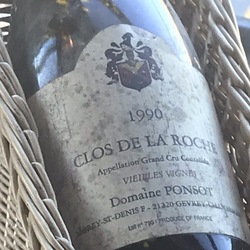

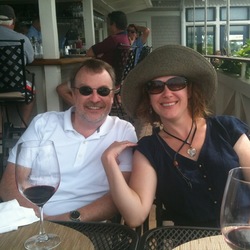
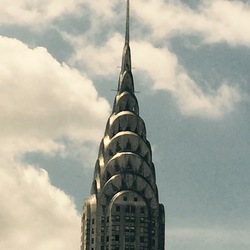
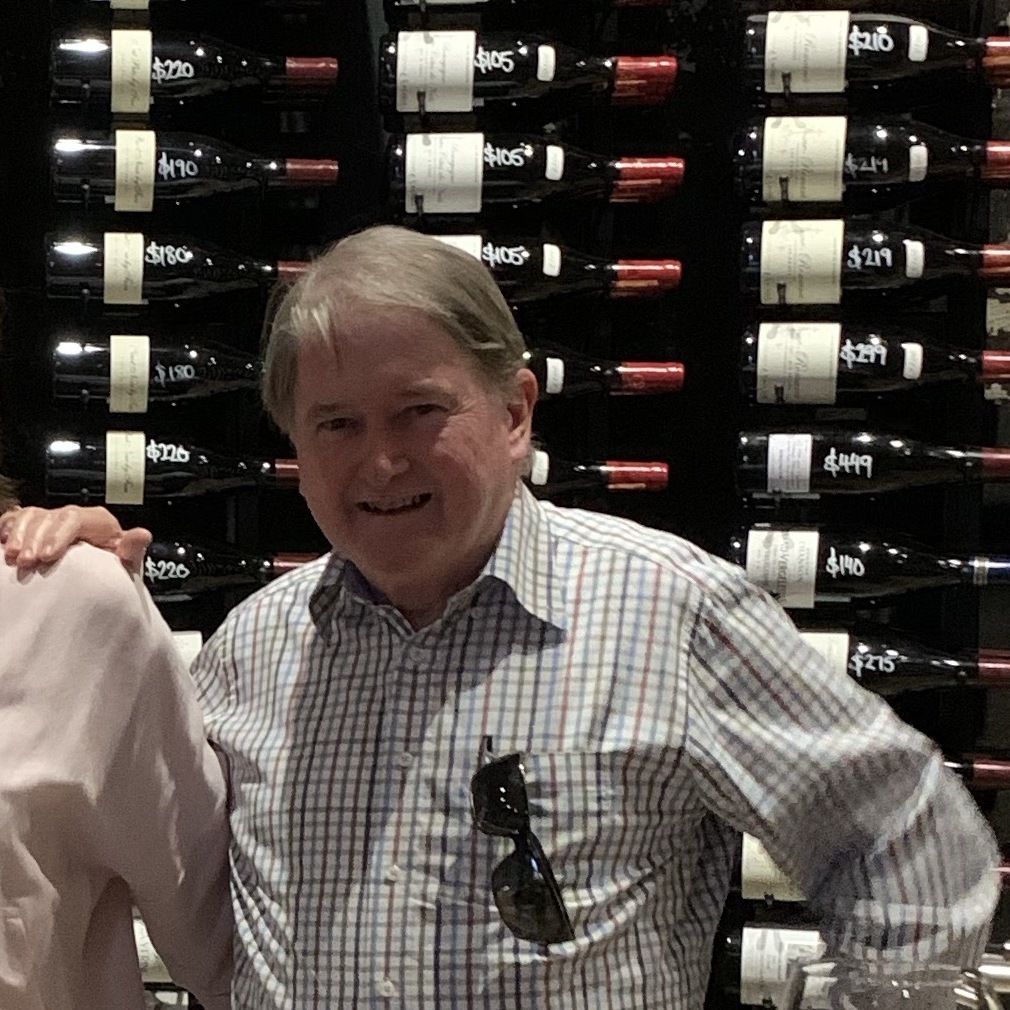


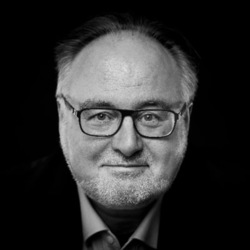



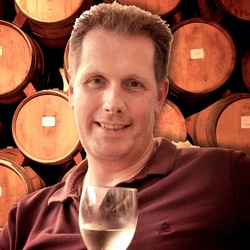
Daniel Leonard
This wine opens with dark cherry, cola, spices and some oak. Structured tannins with a lingering finish. Good now, I’m sure it will be good a little down the road — 5 years ago